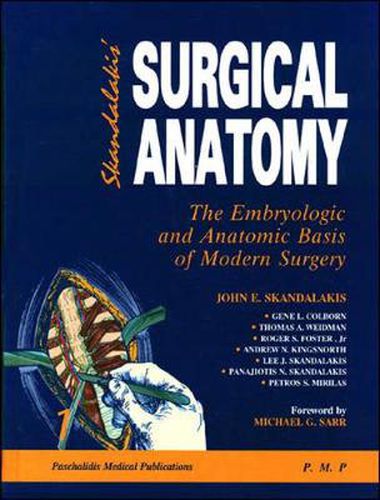Readings Newsletter
Become a Readings Member to make your shopping experience even easier.
Sign in or sign up for free!
You’re not far away from qualifying for FREE standard shipping within Australia
You’ve qualified for FREE standard shipping within Australia
The cart is loading…






What do surgeons want? Fewer anatomical complications in the operating room! This new 2-volume reference, edited by John E. Skandalakis, should help surgeons, residents and students to achieve just that. The result of his 50 years of experience - in both teaching surgical anatomy and in practising surgery - it provides an overall understanding of the body’s processes through a greater awareness of embryology and anatomy. It takes a fresh approach to surgical anatomy by appointing two anatomists and two embryologists as the other editors and more than 20 international general surgeons and specialists as contributors. All have participated in writing chapters to provide modern philosophies about: topographic anatomy; relations to anatomic entities; current surgical trends; and anatomic complications. It is these surgical philosophies, not techniques, which are the focus on the book. The book is organized for quick and easy use. For example, everything a surgeon needs to study the stomach is included in the chapter by that name. Only if coverage overlaps are readers referred elsewhere in the book for additional information. Each chapter is a separate essay from an embryologic, anatomic and surgical viewpoint and follows the format below: historical table; embryology and congenital anomalies (brief); surgical and topographic anatomy in relation to neighbouring organs (detailed); histology and physiology (brief); and surgical applications and anatomic complications (detailed).
$9.00 standard shipping within Australia
FREE standard shipping within Australia for orders over $100.00
Express & International shipping calculated at checkout
What do surgeons want? Fewer anatomical complications in the operating room! This new 2-volume reference, edited by John E. Skandalakis, should help surgeons, residents and students to achieve just that. The result of his 50 years of experience - in both teaching surgical anatomy and in practising surgery - it provides an overall understanding of the body’s processes through a greater awareness of embryology and anatomy. It takes a fresh approach to surgical anatomy by appointing two anatomists and two embryologists as the other editors and more than 20 international general surgeons and specialists as contributors. All have participated in writing chapters to provide modern philosophies about: topographic anatomy; relations to anatomic entities; current surgical trends; and anatomic complications. It is these surgical philosophies, not techniques, which are the focus on the book. The book is organized for quick and easy use. For example, everything a surgeon needs to study the stomach is included in the chapter by that name. Only if coverage overlaps are readers referred elsewhere in the book for additional information. Each chapter is a separate essay from an embryologic, anatomic and surgical viewpoint and follows the format below: historical table; embryology and congenital anomalies (brief); surgical and topographic anatomy in relation to neighbouring organs (detailed); histology and physiology (brief); and surgical applications and anatomic complications (detailed).